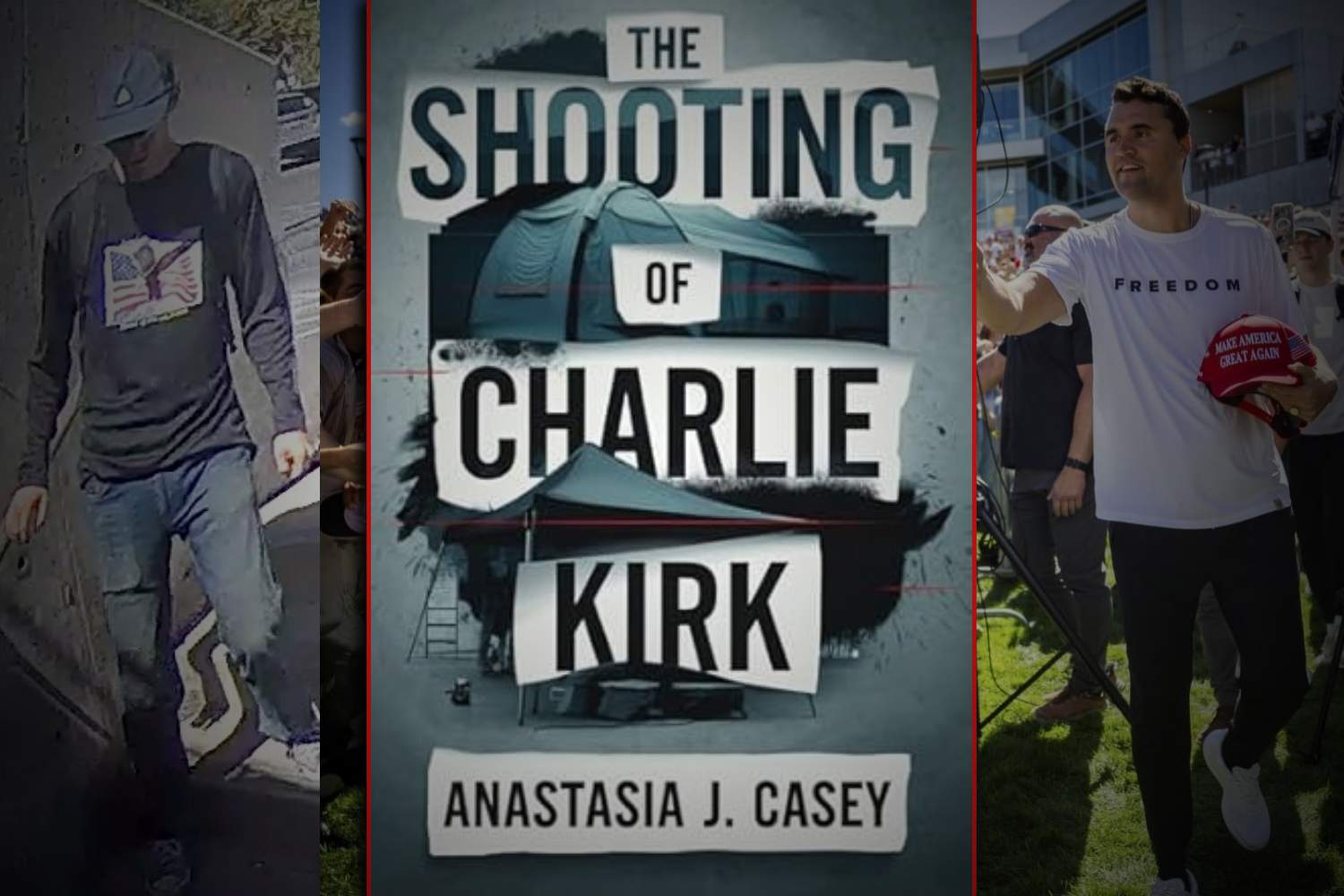Preface
Charlie Kirk has perennially functioned as a lightning rod within America’s political tempest. As the architect of Turning Point USA and a vocal conservative orator, his rhetoric has magnetized both devoted acolytes and relentless adversaries. His published manuscript became yet another ignition point in the cultural conflagration, with the phrase “the shooting of Charlie Kirk book” ricocheting across digital platforms—stoking bewilderment, polemical quarrels, and sensationalistic headlines. Yet beneath the noise lies a narrative that warrants careful unearthing.
The Persona of Charlie Kirk
Born and raised in Illinois, Kirk ascended rapidly in conservative ranks. At the mere age of 18, he inaugurated Turning Point USA (TPUSA), a nonprofit organization intent on evangelizing the doctrines of free markets and limited governance to youth. Over subsequent years, he has become a near-ubiquitous visage on television broadcasts, podcasts, and political stages.
Regardless of admiration or detestation, Kirk’s imprint upon America’s conservative youth remains indisputable.
The Contested Volume
True to his unabashed temperament, Kirk’s tome plunges headlong into motifs of American exceptionalism, unrestrained expression, educational upheaval, and resistance to progressive orthodoxy. It reads as both manifesto and call-to-arms, sculpted to galvanize disenchanted conservatives who perceive mainstream institutions as derelict of foundational values.
For its readers, the book is not merely prose but a guidebook for reclaiming an America they fear is dissolving.
The Rise of the Phrase “The Shooting of Charlie Kirk Book”
At face value, the phrase evokes imagery of violence. Yet in reality, its spark came from verbal fusillades and media distortions. Online wranglings warped its meaning, making casual observers suspect something far more incendiary.
In an ecosystem where algorithms feast upon outrage, the expression metastasized into headlines that emphasized spectacle over substance, turning a political text into a cultural flash grenade.
Principal Currents Within the Text
The work unfurls recurrent conservative motifs:
- Culture Wars & Politics: Allegations that leftist forces have commandeered cultural strongholds.
- Higher Education: Universities cast as ideological foundries manufacturing progressive orthodoxy.
- Freedom of Speech: A clarion against cancel culture and enforced silence.
- American Creed: Reverence for patriotism, capitalism, and ancestral traditions.
The Advocate’s Gaze
To his champions, Kirk is no mere commentator—he is a herald of truth who refuses to genuflect before political correctness. Admirers laud his defense of individual liberty, entrepreneurial vigor, and familial traditionalism.
For conservative youth, often alienated within academic enclaves, his book feels like a compass guiding them through hostile terrain.
The Critic’s Counterpoint
For detractors, however, the book is reductive, combative, and one-eyed. They accuse Kirk of cherry-picking evidence, vilifying opponents, and exacerbating polarization. To them, his treatise is not nuanced dialogue but a rallying drumbeat of division.
Some label it outright disinformation; others call it fuel upon the already raging cultural inferno.
The Media’s Magnifying Glass
Media apparatuses intensified the tumult by spotlighting the controversy rather than the content. The phrase “the shooting of Charlie Kirk book” became a digital wildfire, amplified by echo chambers of social platforms. Clips, quotations, and heated snippets were catapulted across the internet, transforming discourse into spectacle.
Impact on Conservative Vanguard
Kirk’s reach within youthful conservatism is profound. His work stirs activism on campuses, buttresses student organizations, and even trickles into Republican Party talking points. For some, this rejuvenates conservatism; for others, it hardens the barricades against bipartisan dialogue.
Commercial Momentum
Despite criticism, the book’s commercial vitality thrived—bolstered by Kirk’s omnipresence in media circuits. Negative press became free publicity, inflating sales and broadening his audience. Controversy, paradoxically, was his currency.
Academic and Scholarly Rebuke
In intellectual corridors, Kirk’s book is often chastised as shallow and unsubstantiated. Academics deride it as more polemic than policy, more rhetoric than reason. Yet this scholarly dismissal dovetails into Kirk’s recurring narrative: that elites seek to suppress him.
Cultural Reverberations
Beyond the book itself, the debate mirrors America’s fissures. The conversation circles questions of free expression, ethical responsibility, and democratic endurance. Does rhetorical liberty end where societal harm begins? And how much culpability must public figures shoulder for fomenting discord?
Lessons Unearthed
The saga illustrates the sheer volatility of framing. A phrase—“the shooting of Charlie Kirk book”—misconstrued, spiraled into uproar. It stands as a cautionary reminder: headlines can distort, narratives can manipulate, and readers must navigate political texts with critical discernment.
Juxtaposition with Other Political Manuscripts
Kirk’s volume finds itself in the company of fellow conservative bestsellers authored by Ben Shapiro, Candace Owens, and Mark Levin. On the ideological counterbalance, progressives such as Bernie Sanders and Elizabeth Warren release their own polemics.
Thus, America’s literary marketplace has become a mirror of its ideological battlefield.
Coda
What began as an exaggerated phrase evolved into a microcosm of America’s polarized climate. Kirk’s work, whether hailed or condemned, ignites discourse at the very crux of the nation’s ideological identity.
Love or despise his voice, it cannot be silenced—and therein lies its enduring resonance.
FAQs
1. What subjects does Kirk’s book address?
It traverses themes of conservatism, liberty of expression, capitalism, and critiques of higher education and progressive dogma.
2. Why did the term “The Shooting of Charlie Kirk Book” proliferate?
It was birthed by online quarrels and sensationalist framing, exaggerating the discourse around the publication.
3. How have critics responded?
Conservatives acclaim it; critics denounce it as divisive, reductive, and shallow.
4. Did controversy augment sales?
Yes, uproar stoked visibility and invigorated book sales.
5. What broader truths does this dispute reveal?
It underscores America’s fractured polity and the power of media framing in shaping public consciousness.




41undg
kw5h0u
Some genuinely nice and useful information on this internet site, also I conceive the design and style has great features.
wonderful post, very informative. I wonder why the other specialists of this sector don’t notice this. You must continue your writing. I am sure, you have a great readers’ base already!
I?¦ve learn a few just right stuff here. Certainly worth bookmarking for revisiting. I wonder how so much effort you put to create this kind of excellent informative site.
You are my aspiration, I possess few blogs and rarely run out from to brand.
I’ve been surfing on-line more than three hours nowadays, yet I never found any interesting article like yours. It?¦s beautiful price enough for me. In my view, if all website owners and bloggers made excellent content as you probably did, the internet might be a lot more helpful than ever before.
I like what you guys are up also. Such smart work and reporting! Carry on the excellent works guys I have incorporated you guys to my blogroll. I think it’ll improve the value of my web site 🙂